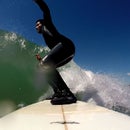Introduction: How to Make Sodium Silicate - Water Glass
Sodium silicate, also called waterglass is an interesting compound that is used in a variety of things. Water glass is a glue, a high heat cement or refractory, used to preserve eggs without refrigeration and as a sealer for concrete. My interest is to use sodium silicate for a refractory in a high heat forge. It is commercially available but locally I was unable to find it in the concentration I needed. So I found some videos and information online and found out how to make my own water glass.
I was successful, so I thought I would share my experience.
Warning, this involves using a caustic ingredient and heat so wear appropriate safety equipment, face shield, gloves and work in a well ventilated area.
Step 1: The Materials
You will need the following:
200 grams Sodium Hydroxide - commonly known as lye, you need the pure form, some drain cleaners are made from this, soap makers also use it.
300 grams Silica Gel - Found in those little do not eat packs that come with electronics, also used as cat litter.
500 ml Water
Heat Source - butane burner, camp stove, etc.
Long Stir Stick
Stainless steel bowl or pot
Well ventilated work space
Step 2: Video of the Whole Process
Here is a video of the whole process.
Step 3: Written Steps
Here are the steps:
Add the lye to the water, this will generate lots of heat and fumes, do this in a well ventilated area.
Once mixed add a little silica gel to the mixture, this will react and create more heat and fumes, stir to mix.
Keep adding a little of the silica gel at a time to the mixture until it is al combined. It is ok if the silica gel does not dissolve.
Heat the mixture over your heat source until it boils and keep stirring. If it starts over boiling, turn down the heat. Keep stirring and eventually it will become a clear thick syrup. If the silica gel has coloring in it, it may have a tint to it, which is perfectly ok.
Let cool and store. It can be diluted with water depending what your application is.
Here is the original video that I used as reference
https://www.youtube.com/watch?v=-Mx1-o1_MWo













